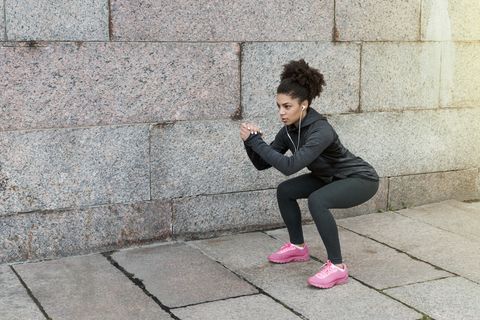Strength Training
Sources: The Run Smarter Podcast (Brodie Sharp), Runners World.
Strength
training for runners is often neglected in favour of getting more miles
under the belt. Runners like to run, and think by running more they
will go faster and have better endurance. It has been found though that
including strength training in your weekly regime will increase
performance and endurance. Those who run 6 days per week should consider
replacing one or two sessions with strength training.
A
very large study of athletes (thousands) found that strength training
reduced the incidence of injuries by 30-50%. With runners specifically,
it’s a bit more complicated though.
It
is a common misconception amongst runners apparently, that strength
training will increase muscle mass, make you bulk up, gain weight and as
a consequence go slower. Wrong. Runners find it very hard to gain
muscle mass.
Muscle imbalance.
Strength training has the potential to reduce your injury risk by
correcting muscle imbalances - just because you have the muscles doesn’t
mean you’re always using them – sometimes muscles get lazy and turn
off. Strength training is a great way to improve muscle activation and
recruitment. Specific run strength training can retrain muscle
recruitment patterns and make sure all the right muscles are
contributing to your run.
Preparing muscles for stress/work.
As you run, the force of about 3 times your body weight is placed
through each leg. Having the muscular strength and stability to absorb
that force of each step will minimize the load through your joints and
reduce your risk of pain or injury.
Increasing the efficiency of your running bio-mechanics. Strengthening the muscles that support your body in ideal alignment while running can result in more efficient use of energy. Even trained distance runners have shown improvements of up to 8% in running economy following a period of resistance training.
Core – strengthening your core will help stability, reduce asymmetry and increase balance, so reducing stress or over-exertion of individual leg muscles.
Don’t make the assumption that strength training will increase your body weight and as a result slow you down.
Increasing the efficiency of your running bio-mechanics. Strengthening the muscles that support your body in ideal alignment while running can result in more efficient use of energy. Even trained distance runners have shown improvements of up to 8% in running economy following a period of resistance training.
Core – strengthening your core will help stability, reduce asymmetry and increase balance, so reducing stress or over-exertion of individual leg muscles.
Don’t make the assumption that strength training will increase your body weight and as a result slow you down.
You do not need to go to the gym to do strength training
Strength training for older runners: Older
runners are susceptible to Sarcopenia (age related decline in muscle
mass). Older adult runners who have reduced muscle mass are potentially
more at risk of joint and soft tissue injuries. Strength training is
extremely beneficial for older adults to maintain muscle mass and the
ability to recruit muscles while running as well as for general
functional capacity.
Runners world has an easy to digest article here:
Three ‘must do’ weekly exercises to improve your running
1. Single leg deadlifts - for Glutes/hamstrings/claves/back
2. Single leg squats (Bulgarian/Pistol) - Quads/core
3. Step Ups – Hip mobility and all of previous groups
Source: The Run Better Podcast (Ash Foster). Available on Apple Podcast and Spotify Podcast
One legged: improves balance and co-ordination, works the core, helps avoid developing an asymmetry and injury.
A
good number of my running club attend a strength and conditioning session
every week in Lydney at Fortitude. It’s an hour class and we all do the
same exercises but choose our own level of weight/resistance. Josh the
proprietor focuses the session on the needs of runners. As well as other
exercises we do squats, deadlifts, core work…

No comments:
Post a Comment